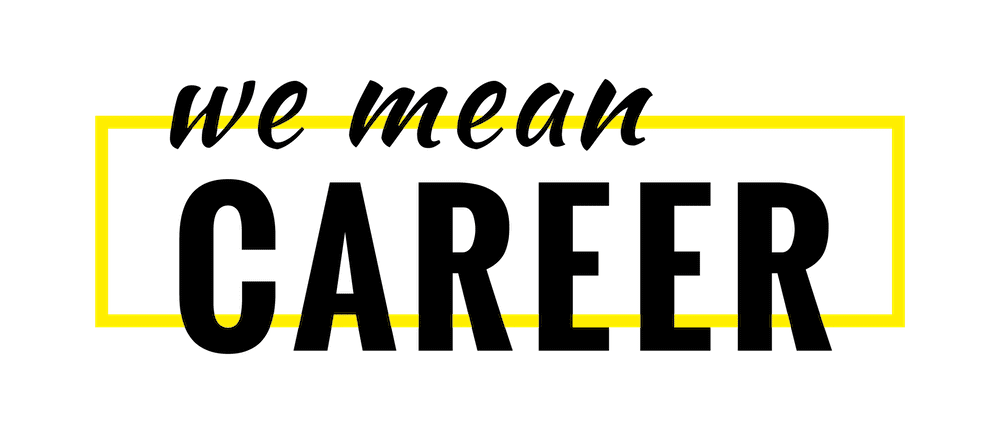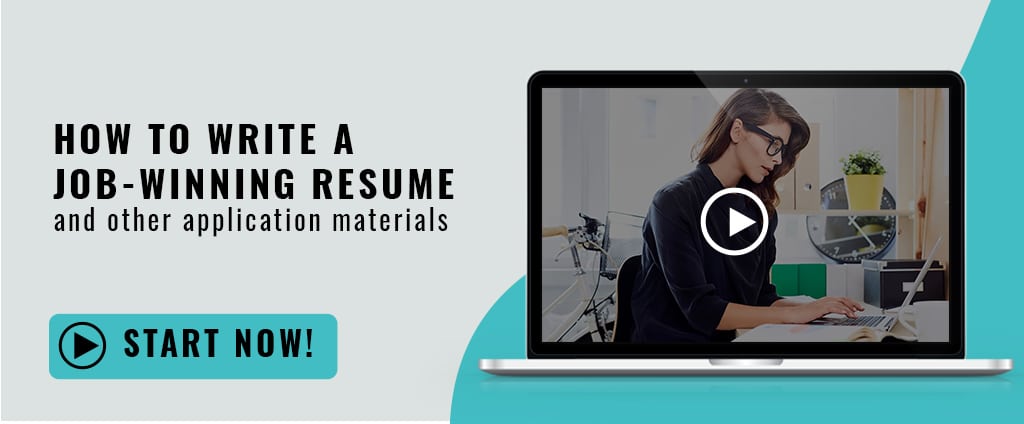10 Common Resume Mistakes
In this video, you will learn about:
✓ common resume mistakes and what they mean to a potential employer,
✓ length, format, spelling and grammar mistakes,
✓ problems with content and inconsistencies,
✓ challenges related to not targeting the audience.
INTRODUCTION
So you’ve found a job that excites you. Getting the job would finally give you the chance to do more of what you love most like teaching others, working one-on-one with clients, or learning new technologies. The only thing standing between you and the job is communicating to the employer that you could do that job really well so that they’ll hire you. In the job application process, you’ll have many opportunities to show your passion for the job and to demonstrate how your skills and experiences have prepared you for it. A resume or C.V. is an excellent chance to give the employer a snapshot of your abilities and accomplishments.
In this series of videos, we’ll be discussing the document most commonly known as a resume or C.V. It’s called a resume in the U.S. and a C.V. in many other countries. We will not be discussing the much longer document typically written by researchers, educators, or academics, that is known as a CV in America. From here on out, I’ll refer to the document as a resume to keep things simple.
In this video you are going to learn:
- What employers are looking for on a resume
- What stands between you and a hiring manager receiving your resume
- Types of resumes
- Difference between a resume and CV
- What makes a resume stand out
After this video you will be able to:
- Draft a resume that is effective and will help you to get a job
- Make your resume concise and to the point
- Select and present relevant experiences & achievements that make you stand out
- Choose an appropriate format for your resume
- Make use of resources that can ensure the quality of your resume
PURPOSE OF A RESUME
Let’s transition to talking about the purpose of a resume
- To introduce yourself to a recruiter or potential employer
- To provide a snapshot of relevant experience to show you’re qualified for a job
- To demonstrate your quality of work and attention to detail to a potential employer
- To allow the employer to see how you stack up next to other candidates;
- And ultimately, to make a memorable impression and to land an interview
COMMON CV AND RESUME MISTAKES
Let’s move on to Common Resume Mistakes
- We’ll look at 8 Mistakes, which fall into 3 categories:
- Design Mistakes
- Content Mistakes
- Audience Mistakes
- You’ll learn about the mistake and what it means for the employer.
Let’s look at:
DESIGN MISTAKES
These are mistakes related to the style and form of a resume.
Mistake #1: The Resume is Too Long
That means:
- It’s more than 1-2 pages in the U.S. or Canada where less personal information is included or 2-3 pages in many other countries
- For example, a recent graduate submits a resume longer than 1 page
- There’s non-essential info
- There’s info employers can’t request, like age or marital status in the U.S.
What does it mean for an employer? The applicant doesn’t:
- Value their time
- Follow conventions
- Doesn’t understand the job application process; standard > 10-sec scan
- It’s hard for the applicant to be succinct
Mistake #2: The format of the resume is distracting
That means:
- It includes formatting for emphasis and visual appeal such as:
- Colors, Bold, italics, underline, font size, capitalization
- Margins, lines, bullets, graphs
- It’s saved as a word versus PDF document
- The file name isn’t standard
What it means for an employer:
- It’s distracting; They can’t focus on content
- Believe it lacks professionalism
- Can’t read off all of it (if words are cut off); feel confused
- Confused by the file name and don’t open the file
- Believe the applicant is unorganized
- Have a hard time reading it: E.g. words are cut off if saved as a word document or because of the elaborate formatting.
Mistake #3: There are grammar or spelling mistakes in the resume
That means:
- There are obvious spelling errors or mistakes spell check missed like their instead of there
- There is Incorrect punctuation or grammar
- The wording is awkward, which can be especially challenging for ESL applicants
What it means for an employer:
- It’s hard to read
- They believe the applicant produces poor quality work, is inattentive or doesn’t have pride in their work
- It seems the applicant is not resourceful: Unaware or people or tools to help
- They believe the applicant is not a strong writer
So we’ve seen design mistakes related to length, format, and spelling and grammar. Now let’s talk about:
CONTENT MISTAKES
Mistake #4: The Resume is Dull. It doesn’t capture the reader’s attention.
That means:
- It includes a list of tasks or responsibilities; not accomplishments or impacted made
- There are buzz words like “I’m a hard worker” instead of content showing or proving the applicant works hard
- The applicant hasn’t quantified their value made achievements quantifiable “E.g. I cut costs” instead of “I cut costs by 15% in the 3rd quarter”
- In general, there’s a lack of numbers
- It’s missing powerful and engaging action verbs
- There are long bullets or sentences
- The same words appear over and over
What it means for an employer:
- They won’t be impressed
- It won’t catch their eye
- May believe the applicant didn’t make unique contributions
- May think the applicant will do what is asked, but not take ownership and go above and beyond
Mistake #5: There are inconsistencies between the Resume, CL, LinkedIn or something online
That means:
- Different dates, titles, job or volunteer positions
- Missing information that is listed somewhere else
How would this come across to an employer?
- Believe applicant is dishonest
- Assume it’s an oversight; careless and not detail-oriented
Mistake #6: The resume shows gaps in experience or job-hopping
That means:
- Period of time unaccounted for.
- Lack of job, training, volunteering or another activity, especially for a long period of time
- Many jobs; employment periods brief
Employment gaps or job-hopping would lead an employer to believe the candidate is a:
- Risk
- Unstable
- Indecisive
- Lacks vision
- Lacks commitment
So content mistakes could mean everything from a lack of keywords and accomplishments to inconsistencies in your application materials to gaps in a resume. Finally, let’s look at:
AUDIENCE MISTAKES
Mistake #7: The resume is not tailored
That means:
- Not focused on experience relevant to the role
- Some content relevant; some not
- Content in bullet points is not listed in order of most relevance
- Doesn’t have keywords from the job description
So what does this mean for an employer?
- They may assume other companies got the same resume
- They might assume their company isn’t the candidate’s top pick
- They may not see it because, without keywords, it likely won’t pass the screening process of an Applicant Tracking System software or a recruiter
- It’s not clear why the person is applying
- Or finally, maybe more time required to see if the person is indeed qualified
Mistake #8: The experience on the resume doesn’t meet the job requirements
That means:
- The resume is missing key requirements for the job such as:
- Skills, education, experience, knowledge, language, or work deliverables
- Key requirements typically marked in job descriptions with the words:
- Key, necessary, minimum, must be, requirements, qualifications
- The key elements that are missing aren’t addressed in the cover letter
- It’s not clear if the person meets the requirements because of wording. E.g. Using 3rd person pronouns like he, she, or they
How would this come across to an employer?
- Not qualified
- Doesn’t follow rules
- Doesn’t respect the time of the person reviewing their resume
In future videos, we’ll talk more about what it means to meet job requirements and differences in how men and women view job requirements. It’s an important point to consider because how seriously a person takes job requirements impacts what jobs they apply for and how they present their qualifications on paper.
So now we know audience mistakes are when a resume isn’t tailored to the company and role and is missing keywords.
CONCLUSION
You learned about common resume mistakes and what they mean to a potential employer. You learned about length, format, and spelling and grammar mistakes. You learned about problems with content and about inconsistencies. You also learned about challenges related to not targeting the audience. You have seen how you can shape the way you present your experience for better or for worse.

